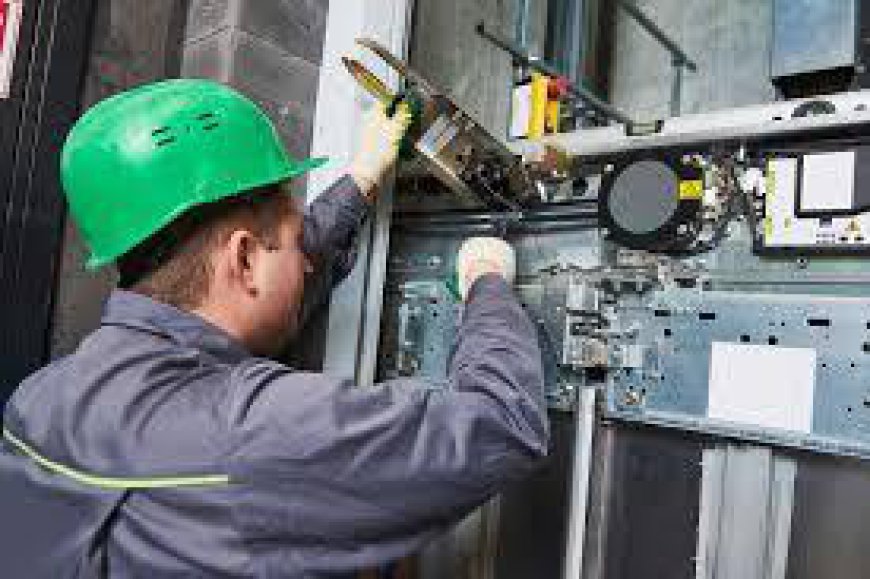Top Design Trends for Passenger Elevators in 2024

As we step into 2024, the world of elevator design continues to evolve, reflecting advancements in technology, aesthetics, and user experience. Modern passenger elevators are not just functional; they serve as an extension of the building’s architecture and interior design. Here are the top design trends for passenger elevators in 2024 that are shaping how we move through our spaces.
1. Sustainable Materials and Eco-Friendly Designs
Sustainability remains a central focus across all industries, and elevator design is no exception.
-
Recycled and Eco-Friendly Materials: Manufacturers are increasingly using recycled materials, such as aluminum and glass, to create environmentally friendly elevator interiors.
-
Energy-Efficient Systems: Incorporating energy-efficient motors and regenerative drives not only reduces energy consumption but also enhances the overall sustainability of the elevator system.
2. Smart Technology Integration
The rise of smart technology continues to transform elevator design, making them more intuitive and user-friendly.
-
IoT Connectivity: Elevators equipped with Internet of Things (IoT) technology allow for real-time monitoring, predictive maintenance, and improved operational efficiency.
-
Touchless Controls: With a growing emphasis on hygiene, touchless control systems, including mobile app integration and voice-activated controls, are becoming standard features in modern elevators.
3. Customizable Aesthetics
Customization is key to creating a unique elevator experience that aligns with the building's overall design.
-
Tailored Interiors: Elevator interiors can now be tailored to reflect the building's branding or aesthetic preferences, allowing for a cohesive design experience. Options include custom wall finishes, lighting, and flooring materials.
-
Dynamic Lighting: Innovative lighting solutions, such as LED strips and programmable ambient lighting, are being used to create visually stunning environments inside elevators. This allows for mood adjustments based on the time of day or special events.
4. Biophilic Design Elements
The incorporation of natural elements in design, known as biophilic design, is gaining traction in elevator aesthetics.
-
Natural Materials: Elevators that feature wood paneling, stone accents, and greenery can create a calming atmosphere, bridging the gap between the indoor environment and the natural world.
-
Nature-Inspired Themes: Designers are drawing inspiration from nature, incorporating patterns and textures that mimic natural elements, which can enhance the passenger experience.
5. Transparent and Glass Elevators
Glass elevators are making a significant comeback, especially in luxury residential and commercial buildings.
-
Panoramic Views: Transparent elevator shafts provide breathtaking views of the surroundings, creating an immersive experience as passengers ascend or descend.
-
Sleek Modern Look: The minimalist design of glass elevators complements contemporary architecture, making them a popular choice for high-end developments.
6. Enhanced Safety Features
With advancements in technology, safety features are becoming more sophisticated and integral to elevator design.
-
Advanced Sensor Systems: New sensor technologies allow for improved detection of obstacles, ensuring safer operation, especially in crowded environments.
-
Smart Emergency Systems: Elevators are now equipped with advanced emergency communication systems, ensuring passengers can quickly reach help in case of an emergency.
7. Inclusive Design for Accessibility
Creating an inclusive environment is a priority in modern elevator design, ensuring accessibility for all passengers.
-
User-Friendly Controls: Elevators are being designed with easily accessible controls for individuals with disabilities, including tactile buttons and braille signage.
-
Space for Mobility Devices: Enhanced cabin space to accommodate wheelchairs and mobility aids is increasingly standard, promoting inclusivity and ease of use for all passengers.
8. Themed and Experiential Designs
Elevators are becoming more than just a means of transportation; they are now part of the overall experience of the building.
-
Immersive Experiences: Themed elevators that incorporate sound, light, and visuals can provide an engaging journey, enhancing the overall experience for passengers.
-
Brand Storytelling: Designers are leveraging elevator spaces to tell a brand's story or showcase artwork, turning the ride into an engaging narrative.
9. Compact and Space-Saving Designs
As urban spaces become more limited, compact elevator designs that maximize functionality while minimizing space are trending.
-
Space-Efficient Models: New designs focus on reducing the footprint of the elevator shaft, allowing for more efficient use of building space without sacrificing capacity.
-
Modular Components: Modular elevator systems enable quicker installations and adaptability to various building layouts.
10. Integration with Smart Building Systems
Elevators are increasingly being integrated into the broader smart building ecosystem.
-
Building Management Systems: Elevators can now communicate with other building systems, such as HVAC and lighting, to optimize energy use and enhance user experience.
-
Data Analytics: Advanced analytics can monitor elevator performance and usage patterns, allowing building managers to optimize operations and maintenance schedules.
Conclusion
In 2024, passenger elevators are evolving beyond mere transportation systems to become integral elements of building design and user experience. With a focus on sustainability, smart technology, inclusivity, and aesthetic appeal, these trends reflect the broader shifts in architectural and interior design philosophies. As the industry continues to innovate, the future of passenger elevators promises to enhance our environments and elevate the way we experience vertical transportation.

 muslim
muslim